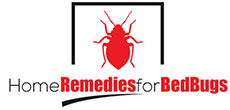Have you ever experienced sudden itching and rashes on your skin upon getting off your bed? If so, it is most likely that bed bugs are the culprit. You might want to get rid of them as soon as possible. And getting to know about bed bugs can be your first step in eliminating them. Just as the saying goes, ‘know your enemy and you can win the fight’.
 similar to the size of an apple pip. Their bodies inflate after feeding and become reddish in color. They have typically six legs and two antennae.
similar to the size of an apple pip. Their bodies inflate after feeding and become reddish in color. They have typically six legs and two antennae.
Bed bugs cannot fly, however they can crawl rapidly over ceilings, floors, and walls. They have been recognized to pass through over 20 feet from concealing in order to feed but will usually hide within 3 to 6 feet from their host. Because of their flat bodies, bed bugs can simply hide in small spaces such as mopboards, crevices in floors, under floor coverings, behind unfastened wallpaper, bed casings, behind picture frames, couches, and several other places which makes them very hard to find. They are likely to stick together and massive infestations will produce a sweet but horrible stench.
Female bedbugs can lay hundreds of eggs. Each egg is about the size of a tiny spot of dust. Undeveloped bedbugs, known as nymphs, cast off their skins 5 times before hitting maturity and are in need to suck blood before every shedding. Nymph bed bugs are translucent or have yellowish color and are usually 1 to 4mm in length. Under suitable circumstances, the bugs can fully grow in as fast as one month and can create up to three generations in a year.
Bed bugs have regenerated over the past years. And it is alarming to know that their population has dramatically increased recently. The integration of re-introduction, rise in international travel and the reality that pest control professionals no longer employ older insect killers like DDT (dichlorodiphenyltrichloroethane), Chlordane and Lindane, indicates that bed bugs have been able to show a massive resurgence and become an awfully grim pest in the 21st century. They possess an exceptional skill to hide and because of their capability to multiply, modern inspection and control techniques must be considerably more comprehensive and extensive than with various other insects.
Habitat and Behaviour
- Conceals itself in dark, quiet places near the host
- Hides in cracks in furniture and mopboards near the beds
- Is drawn in by carbon dioxide and heat that humans give off
- Being generally active at night time; not frequently spotted in light, especially in small group
- A probable problem in residences with high turnover such as hotels and inns
- Capacity to travel to different rooms in buildings with multiple units
- Often carried in on baggage or old furniture
Lifecycle
- Goes through regular metamorphosis from egg to nymph to adult
- Nymphs are tinier versions of the adults and will undergo some molts until fully developed
- Female lays 200 to 500 eggs throughout its lifespan, 10 to 50 at the least on uneven surfaces
- Eggs hatch in 6 to 17 days
- Adult can endure over a year without feeding
Bed bugs Bite
Bedbugs are nocturnal creatures; they are active mostly at nighttime and typically bite their hosts while they are sleeping. They sip host’s blood by perforating the skin surface and sucking blood through an extended beak. They suck blood from 3 to 10 minutes to become puffed up and then they crawl away without being noticed.
When bed bug bites, the host won’t feel anything at first, but shortly will experience intense itchy feel. Bed bug bites any part of skin uncovered while sleeping, unlike flea that bites mostly around the ankles. Moreover, bed bug bites do not make a red speck in the center like flea bites make.
People who do not notice they have a bed bug pestilence may blame on the itching and swelling to other causes like mosquitoes. To assure bed bug bites, you have to find and confirm the bugs themselves.
Hiding Place
Bed bugs may come into your home unnoticed through baggage, garments, old beds and couches, and other objects. Their flat bodies make it easy for them to put themselves into small places, about the thickness of a magnetic card. Bed bugs do not dwell in lairs like ants or bees, but are likely to stay in groups in their hideout. Their first hiding places are usually in bed frames, bed sheets, headboards, and box springs where they can easily access sleeping hosts to bite in the nighttime.
However, they may spread out through the bedroom over time, moving to and fro any gap or secured hiding location. They may also scatter to nearby rooms or residences. Due to the fact that bed bugs survive only on blood, having them in your home is not an indication of dirtiness. You are as likely to chance upon them in tidy homes and hotel rooms as in dirty ones. Even the tidiest of places can serve as homes to bed bugs and they scatter quickly once inside. Bed bugs are absolute hitch hikers and easily move from place to place by clinging into someone’s personal possessions or luggage.
How Bed Bugs Spread?
Bed bugs do not stick to people but they can coincidentally get in contact with our belongings such as luggage, clothes, and purse. Thenceforth they can travel from their present dwelling into new ones in homes, apartments, offices, hotels, or any other premises as well as modes of transportation such as buses and taxis. Sanitation and hygiene of belongings and buildings is not the case as bed bugs are well known hitch hikers and can pop up almost anywhere.
Once they are set, bed bugs are likely to stay put but can scatter due to any of the following:
- Being bothered (caused by disassembling furniture or incorrect pesticide application)
- Scarcity of food (absence of host) may cause them to transfer to nearby rooms
- Lack of concealed spaces to serve as hiding place may cause them to move to nearby rooms
- Bug-ridden furniture transported from place to place, or passed on to other room
- Old vacuum cleaners used for several rooms
- Commercial laundry machines
Health Risk
Bed bugs do not cause any severe health risks from transmissible diseases but their saliva contains proteins that can cause itchy red lumps on some people and animals.
Getting Rid of Bed Bugs
Eliminating bed bugs is doable although doing it is not as easy as it seems. There are home measures or do-it-yourself remedies that can help get rid of the bugs. Use of chemical measures like pesticides can also be used to eradicate the infestation. But some commercial pesticides must only be applied by licensed professionals. If nothing seems to work, hiring professionals to get rid of bed bugs permanently is a great alternative. With the application of the pest control process, professional exterminators will make sure that the infestation in your home is gone for good.




